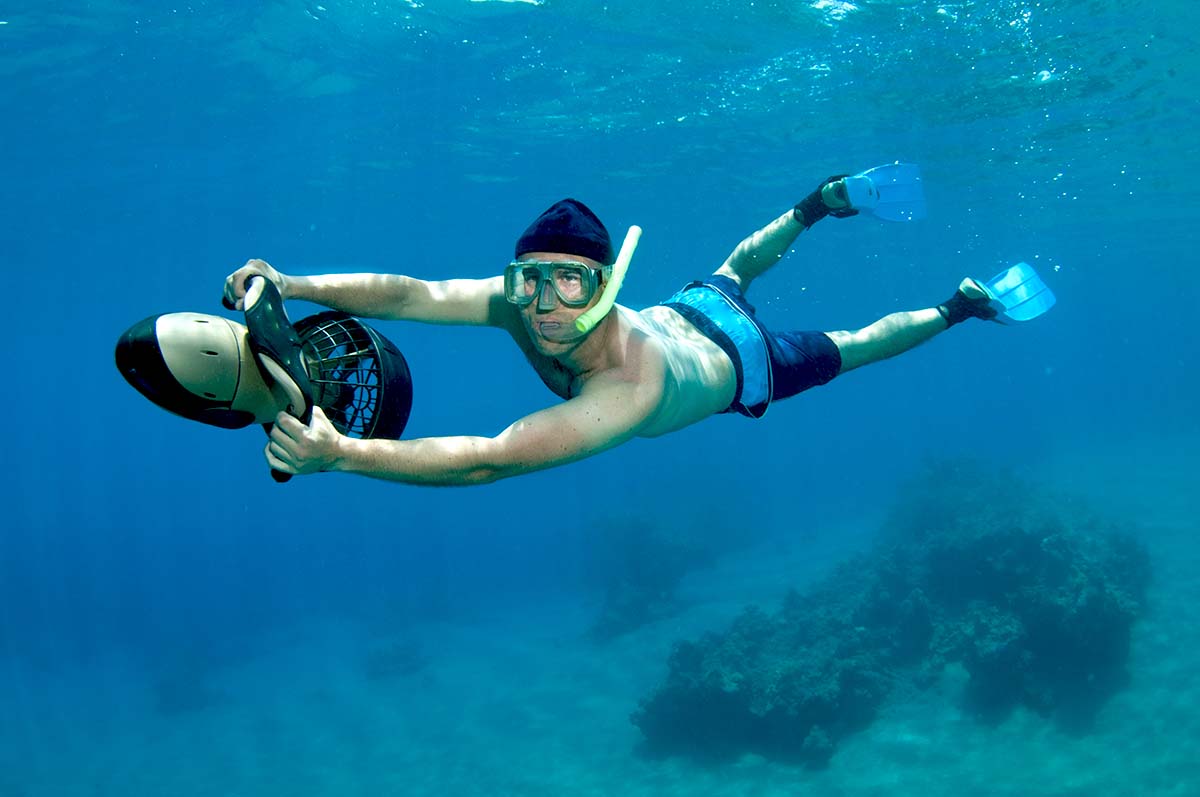India's Navy Soon to Be Stealthier: Advanced Technologies Enhancing Maritime Security
India's Navy is on the path to becoming stealthier, thanks to advancements in technology and strategic investments. The Defence Research and Development Organisation (DRDO), India's equivalent to DARPA, has stated that all future naval ships will have stealth features, making them more difficult for enemy forces to detect and target.
As of November 2022, the Indian Navy has 45 vessels of various types under construction, with plans to build a strong navy of 200 vessels and 500 aircraft by 2050. This ambitious expansion aims to make India's naval forces a significant presence in the region and enhance their capabilities in the face of potential threats, such as those posed by China.
The Indian Navy's future surface fleet will be spearheaded by a class of Next Generation Destroyers, with progress expected to be made soon. Additionally, India's indigenous Light Combat Aircraft (LCA) Tejas is set to be equipped with the BrahMos-NG, a lighter variant of the BrahMos supersonic cruise missile, further enhancing the Navy's capabilities and increasing their stealth.

Current State of India's Navy
The Indian Navy is undergoing a significant transformation as they strive to become more stealthy and formidable in their maritime capabilities. As of now, the Indian Navy's submarine fleet consists of 9 Sindhughosh-class (Soviet Kilo-class) and 4 Shishumar-class (German HDW Type 209) diesel-electric submarines, as well as a single nuclear-powered INS Chakra (Akula II class) submarine source.
In addition to submarines, India is working on enhancing its surface fleet capabilities. The Indian Navy is set to commission the 37,500-ton carrier INS Vikrant in August, and plans are underway to acquire up to 57 aircraft to operate from the ship. This carrier will partner with the 45,000-ton INS Vikramaditya (ex-Admiral Gorshkov), a Russian-bought aircraft carrier which operates MiG-29K aircraft source.
In terms of stealth technology, the Defence Research and Development Organisation (DRDO), India's equivalent to DARPA, is playing a crucial role in developing advanced stealth technology for naval vessels. The DRDO aims to make Indian naval ships less conspicuous and harder to detect by enemy forces source.
Collaboration with allies is also a key factor in improving India's Navy. US forces have recently taken part in Exercise Milan, an Indian Navy-led multinational maritime exercise that strengthens partnerships and interoperability between participating navies source.

Recent Developments in Stealth Technology
India's navy is making significant advancements in stealth technology to enhance its effectiveness and operational capabilities. The Defence Research and Development Organisation (DRDO) has stated that all future naval ships will incorporate stealth features, leading to a more robust and agile fleet(Popular Science).
The Indian Navy has embarked on incorporating new-age advanced technology into their systems and processes by launching major projects and initiatives. This includes 30 Artificial Intelligence projects that are currently in the works(New Indian Express). These initiatives will strengthen the navy's stealth capabilities, among other improvements in operations and tactics.
An essential aspect of stealth technology is the management of the Infrared Suppression Signature System (IRSS). The Naval Science and Technological Laboratory (NSTL) recently handed over a 3MW Diesel Engine IRSS to the Indian Navy(The Hindu). This system will minimize the heat signature emitted by the vessels, making them less detectable to potential opponents.
Another notable development in India's endeavours to achieve stealthier naval vessels is the enhancement of conventional submarines with new propulsion technology(Times of India). This technology aims to boost endurance and further improve the stealth capabilities of these submarines, allowing them to remain undetected for extended periods.
India's navy is also investing in the construction of cutting-edge stealth frigates, such as Taragiri, which is part of Project 17A(Firstpost). These frigates will boast state-of-the-art weapons and advanced features, contributing to India's overall naval readiness and capability to face modern maritime threats.

India's Plans for Stealth Enhancements
India's Navy is taking significant steps towards enhancing its stealth capabilities to maintain a cutting-edge advantage in the maritime domain. This section will focus on three primary areas of stealth advancements, including new stealth ships and submarines, stealth aircraft and drones, and radar and communication upgrades.
New Stealth Ships and Submarines
The Indian Navy has been working on developing and acquiring advanced stealth ships to strengthen its fleet. An example is the INS Mormugao, an indigenous stealth-guided missile destroyer that significantly enhances the Navy's combat capabilities. Additionally, India signed a $2.5-billion deal with Russia for four more Krivak/Talwar class stealth frigates to augment their naval forces.
India is also investing in new stealth submarines, such as the submarine Vela, the fourth submarine of the Kalvari Class under Project-75. These submarines are critical for maintaining a strong underwater presence and ensuring the security of India's vast maritime interests.
Stealth Aircraft and Drones
India is actively working on incorporating stealth technologies in both manned aircraft and unmanned aerial vehicles (UAVs) for enhanced surveillance and combat capabilities. While details about specific stealth aircraft and drones are not public, it is evident that India's defense forces are investing significantly in this area to stay on par with emerging trends in military aviation.
Radar and Communication Upgrades
India's Navy is not only focusing on stealth platforms but also investing in cutting-edge radar and communication technologies. These upgrades aim to reduce the detectability of their naval assets, enable effective communication across platforms, and provide situational awareness in a contested environment.
Overall, the Indian Navy is taking noteworthy strides in stealth enhancements as part of its military modernization plans. With a focus on new stealth ships, submarines, aircraft, drones, and radar upgrades, India's maritime forces are working to be better equipped and prepared for the challenges of the 21st century.

Challenges and Limitations
Although India's navy has embarked on an ambitious project to enhance its stealth capabilities, certain challenges and limitations must be acknowledged, including budget constraints, technological hurdles, and logistical issues.
Budget Constraints
The Indian military faces significant budget constraints, which can affect naval modernization efforts, including those related to stealth capabilities. Defense budgets have not kept pace with the country's growing security needs, and this financial pressure may limit India's ability to fully invest in the required advanced technologies and equipment.
Technological Hurdles
Another challenge is bridging the gap between India's current capabilities and the cutting-edge stealth technologies required for modern naval vessels. India's Defence Research and Development Organisation (DRDO) is working to develop stealth features for the country's naval ships. However, achieving the desired level of technological sophistication and integrating these new capabilities into existing and future naval assets could prove difficult, given the complex and rapidly evolving nature of stealth technology.
Logistical Issues
Developing advanced stealth capabilities for naval vessels not only requires cutting-edge technology but also an intricate logistical infrastructure to support and maintain these assets. Ensuring the availability of specialized equipment, skilled personnel, and necessary spare parts may pose logistical challenges for the Indian Navy, especially as it seeks to expand its operational reach and endurance.

Possible Implications of a Stealthier Navy
Regional Security Dynamics
India's Navy becoming stealthier would potentially alter regional security dynamics. Given the existing tensions with neighboring countries like Pakistan and China, a stealthier navy could provide India a strategic advantage in maritime operations. Retrofitting submarines with Air Independent Propulsion (AIP) technology, for example, has already been included as a means to enhance India's naval capabilities source.
More advanced and stealthy naval assets could impact the balance of power in the region, prompting other countries to assess their naval capabilities, and potentially drive an arms race. Consequently, the perception of regional insecurity might increase, leading countries to reassess their defense strategies and investments.
Global Naval Power Ranks
A stealthier Indian Navy could influence India's position in the global naval power rankings. Improvements to its naval fleet, such as constructing new stealth warships like Tushil, indicate a commitment to enhancing its capabilities and global reach. As India's naval modernization plans take shape, its role in the Indo-Pacific region is expected to grow source.
As a result, India's rise in the global naval power rankings could attract more international interest in collaborating with its navy, potentially increasing the country's geopolitical influence and ability to project power beyond its territorial waters.
Strategic Partnerships
India's pursuit of a stealthier navy could also affect its strategic partnerships. For instance, the country has signed a $2.5-billion deal with Russia for four Krivak/Talwar class stealth frigates source. Such partnerships could strengthen India's ties not only with Russia but also with other countries in need of advanced naval capabilities.
Moreover, India's growing naval power might encourage other countries to seek India's expertise and cooperation, especially those with shared strategic interests or facing similar security challenges in the Indo-Pacific region.
Conclusion
As India's navy continues to advance, the incorporation of stealth technology is a significant step towards bolstering its capabilities. With the Defence Research and Development Organisation emphasizing stealth features in future naval ships, India aims to increase its maritime prowess and maintain a strong presence in the region.
Alongside other advancements such as the INS Vishaal aircraft carrier project and the recent addition of the Krivak/Talwar class stealth frigates, the Indian Navy demonstrates its dedication to modernization and growth. These developments seek to address potential threats and enhance cooperation with allies like the United States, Japan, and Australia.
With a focus on stealth, the Indian Navy is positioning itself as a formidable force in the Indian Ocean and beyond. Its commitment to technological advancements and strategic partnerships will play a crucial role in shaping the region's security landscape in the coming years.
Meet Charlie Hardcastle, the undisputed king of the sea, and Editor-in-chief of Sea Magazine. Charlie's passion for boating runs deeper than a kraken's lair, and his years of experience on the water make him the ultimate boating guru. When it comes to boats, Charlie's knowledge is as vast as the ocean. He knows everything from the latest technology to the best locations for water enthusiasts. But Charlie's expertise isn't just limited to boating mechanics and history. He's also a marketing whiz, with a keen understanding of how the industry is adapting to changing consumer preferences. He knows how to effectively reach new audiences, whether they're looking for a luxury yacht or a modest pontoon boat. In short, Charlie is the complete package, a one-stop-shop for all things boating. So if you're looking to learn about the latest technology, marketing strategies, or just want to hear some epic sea tales, Charlie Hardcastle is your guy.







